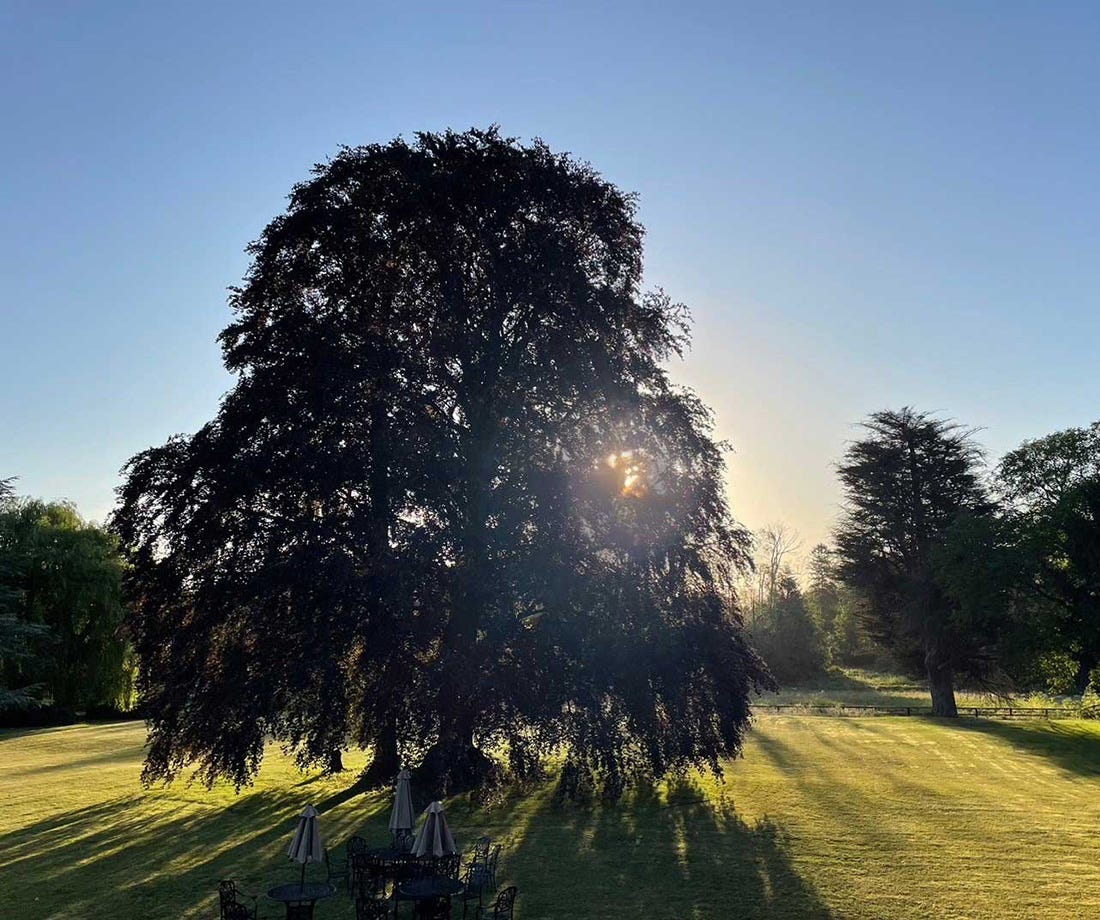
Introducing our new article series with writer Maha Harada. Dive deeper into the world of pearls through her essays and stories exclusive to Mikimoto.
Vol.4
Morning dew in the courtyard
Part 1
I wonder when it was that I overheard my mother’s words in the courtyard garden at my parents’ home in Kyoto — the first time I heard her Kyoto dialect in a long time.
It was early summer. The leaves of blue maple, tree ivy, and bone-knitted lotus planted in our small garden were shading each other in vivid green. I was on the engawa porch when my mother suddenly stepped down into the courtyard, barefoot, and started murmuring at the stone washbasin.
Oh my, look at you with all the moss growin’ around. You've really gotten up there in years, haven’t you now... That was more or less what she said.
The reason why I remember this is partly because of the peculiarity of seeing my mother, who rarely spends time in the courtyard in the first place, going down there in her bare feet, speaking to the mossy washbasin. That combined with the glow of her slim alabaster ankles peeking out from the hem of her yukata and the melodic flow of her long unused Kyoto dialect made a lasting impression on me, I think.
I can’t recall whether I said anything to my mother at that time. But I do remember it was just before the peak of summer in Kyoto when air conditioning becomes a necessity. Caressed by the refreshing breeze passing through our old townhouse, I watched over my mother as she stepped down into the courtyard and spoke to the washbasin like she was an innocent girl again. That moment gave me the feeling of being in an empty museum exhibition room, gazing at a scroll painting displayed in a glass case.
A while after that, my mother was hospitalized. She had slipped and fallen on the stairs, sustaining a fracture. Despite the difficulty of living in a townhouse and how old my mother had become, neither of us ever imagined that she would lose her footing on the steep box staircase in the house she was born and raised in. That backfired on us.
My mother had lived by herself for nearly 10 years after my father passed away. Why did she never leave the hassle of townhouse life? I asked myself.
I can’t see myself livin’ anywhere else, my mother always used to say.
Why don’t you get the house rebuilt? How about getting it renovated? I gave her various suggestions, but she firmly refused.
Then, she ended up with the misfortune of being hospitalized. After that, she was admitted to a nursing home without returning home.
It was a little while ago that I started noticing my mother making nonsensical statements and forgetting names of objects, gradually slipping away from reality. When her granddaughter visited, my mother apparently called my name with delight, saying, Oh Maya, you’ve come all the way to see me?
My daughter later called me and said, Grandma was kind of cute.
Then, the other day, my mother quietly departed this world.
Her old townhouse has been left to me, her only child and daughter.
In this house of unknown age, only the air conditioner stands out as being new. I don’t want such a thing, my reluctant mother said, but I persuaded her and installed it against her will.
Shop, dining room, reception, annex, long earthen passage, smoke shaft, courtyard garden. This is a house that retains the charm of a typical Kyoto townhouse. A house where time has stopped. A house with my mother’s presence lingering here and there. A house that is like my mother’s gaze itself.
I opened the wooden lattice window on the street frontage, then the glass window looking over the courtyard garden, welcoming a fresh breeze through the house.
“You get a fine breeze in here, eh? It’s such a fine quality about a townhouse,” said the real estate appraiser visiting from the bank as he wiped a bead of sweat on his forehead.
I cracked a smile and replied, “It’s nice during the mild seasons but not so much in the middle of summer... Plus you get chilled to the bone in the middle of winter.”
It really is a challenge to live in a Kyoto townhouse... I almost said but held back. Now that I’ve decided to sell the house, I should steer clear of making unnecessary remarks.
“What a fine garden. Fine scenery. The paving stones are lookin’ nice and mossy... The washbasin’s lookin’ fine too,” he observed as he stood on the porch. His words sounded genuine. I found myself smiling. As I led him from the shop through to the dining room and into the reception before showing the garden, he repeatedly used the adjective “fine” to praise this old house. He then summed up his first impression by saying that it’s rare to find a townhouse in such good condition.
“Do you think someone will want to buy it?” I asked.
“I don't know much about the buyin’ and sellin’,” he warned before adding, “Seems like there's a boatload of people renovatin’ old houses into eateries and inns these days. I also hear that townhouses are gettin’ more popular with foreigners.”
He suggested optimistically that I’ll find a buyer in no time.
Following a brief tour of the house and some superficial conversation, I saw him out to the front of the shop. The appraiser put on his shoes which were neatly placed on the earthen floor and turned to face me.
“It was a pleasure to see this fine property. Now then, I should get goin’,” he bowed down politely and left.
I went around both floors of the house to close the windows. Kyoto townhouses are fronted with a door and lattice windows. Aptly known as “eel beds,” their long and narrow plot stretches backwards with a courtyard garden or spot garden. The long earthen passage known as hashiriniwa features a cooking space and a stairwell above it to the upper floor. Opening the front and back windows lets the wind flow through the house. It’s true that houses in Kyoto are designed for summer.
Kyoto city sits in a basin, which is why it traps heat and gets swelteringly hot during summer and bitterly cold during winter through the opposite effect. Its location probably played a role in the severe epidemics back in the olden days. The Gion Festival began as a ritual to ward off disease, and townhouses now have a small statue of “Shoki the Plague-Queller” enshrined on their roof tiles.
In summer, sliding doors are replaced by bamboo screens, and in winter, hibachi braziers are used to burn charcoal. People in this town have always lived and survived here by learning to deal with inconvenience and adopting creative solutions.
My mother was one of those people. Born into a family of kumihimo braiding merchants in the Nishijin district, she married the head craftsperson, my father, who became a son-in-law and preserved the thread of tradition. But there was no successor following my father’s passing so the family business came to an end at that point. From then on, my mother lived frugally without bothering anyone and quietly faced the final curtain.
I left my parents’ house to go to a university in Tokyo. Then, I also got a job in Tokyo and started a family there. The only things that my mother and I had in common were that we both gave birth to one daughter and became widowed. Otherwise, I’ve been on a completely different path in life to my mother.
Staying at the company I joined as a new graduate for more than 30 years, I managed to see my daughter Makoto graduate from university and become a working adult. Juggling work and childcare required a lot of effort, but as they say, vows made in a storm are forgotten in calm. This spring, Makoto entered her fifth year at work and introduced me to her future husband. All the hard work was worth it, I finally thought at that moment.
I want to share the news with Grandma in person, Makoto insisted and willingly visited my mother at her nursing home with her fiancé. That became the final grandmother and granddaughter meeting.
I shut the glass window on the porch and lock it. The washbasin described earlier as “lookin’ fine” is crouched in a corner of the courtyard under the eave. Upon a closer look through the glass window, I spotted an old autumn leaf with a hint of scarlet, sitting in dead silence at the bottom of the dried-up water bowl.
Maha HARADA
b. 1962 Tokyo, Japan
Based between Tokyo, Paris, Kyoto, and Nagano, Maha Harada is a creative visionary and exceptional storyteller who has produced world-class, category-defying writing.
Harada is one of the founding curators of Tokyo’s acclaimed Mori Art Museum; when it was established, she was sent to represent the Museum as a project researcher at its principal cultural partner, The Museum of Modern Art, New York. It is for this reason that Maha Harada is renowned as Japan’s leading creator of art novels and art entertainment.
She is among Japan’s most talked-about writers and creatives, and her extraordinary experiences give her an unparalleled ability to blend art and literature. Harada’s art novels journey into the past to breathe fresh life into some of the world’s most beloved artists, who still enchant countless people today. These stories transcend time and generation crossing the boundaries of nation and region. At the same time, they are rooted in the experiences of a woman born and raised in Japan.



 Back
Back 




 Back to "Everything in harmony"
Back to "Everything in harmony"